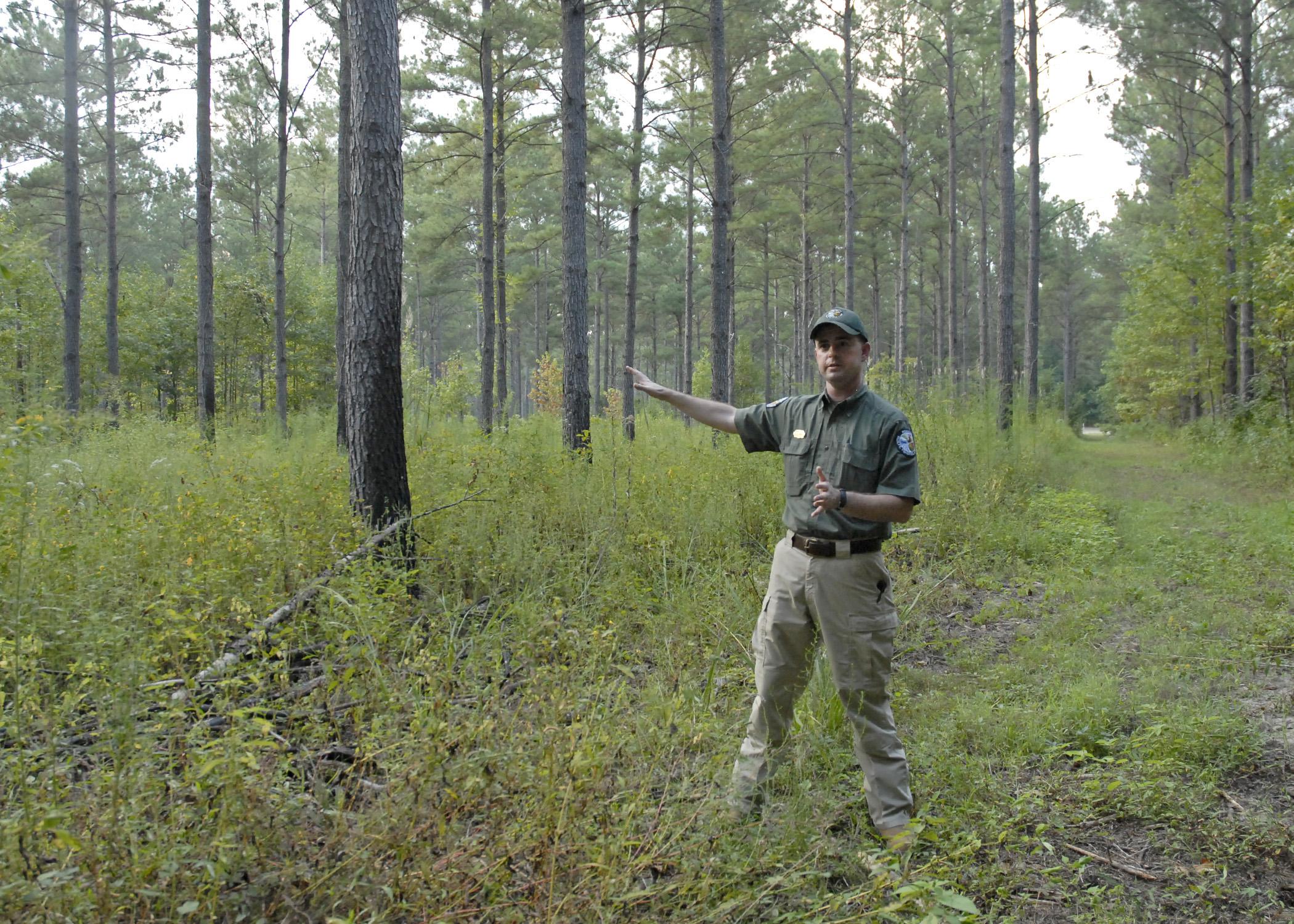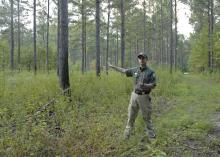Information Possibly Outdated
The information presented on this page was originally released on September 19, 2013. It may not be outdated, but please search our site for more current information. If you plan to quote or reference this information in a publication, please check with the Extension specialist or author before proceeding.
Landowners learn methods to manage wildlife, timber
ABERDEEN – Landowners are learning they do not have to decide between managing for wildlife or managing for timber production.
Responding to frequently asked questions, Randall Nevins of the Mississippi State University Extension Service in Monroe County organized a multicounty forest and wildlife tour on a farm just north of Aberdeen on Sept. 12.
“Some of the most common questions landowners ask Extension agents relate to land management issues, sometimes connected to timber, sometimes wildlife and sometimes both,” he said. “They are often relieved that relatively simple management practices can do it all.”
Nevins invited state agency and private industry representatives to explain management efforts on land that was primarily soybean fields in the 1980s. Landowner Bobby Watkins converted the family farm to timberland when he planted pines in 1987.
“We want to educate landowners about herbicides and controlled burns that can help the trees grow faster and promote wildlife habitat at the same time,” he said.
Lee Woodall, an MSU College of Forest Resources bachelor’s and master’s graduate and wildlife biologist with Midsouth Resource Management, described the 250-acre farm to the tour participants. The farm is also frequently used to educate wildlife and timber experts about pines, hardwoods and native grasses.
“Early in the development of this farm, the landowner realized the beneficial aspects of Imazapyr herbicide, commonly sold as Arsenal AC, not only to reduce competition with hardwoods, but also for wildlife,” Woodall said. “Arsenal was good at killing nondesirable trees in pine forests without hurting the many plants that deer like to eat. It is considered a very safe herbicide to use.”
Woodall said the first five years after planting pines are great for wildlife, but then conditions turn poor until the first thinning. After the first thinning, spraying a selective herbicide within two years helps eliminate unwanted competition for sunlight and nutrient, he said. After that, controlled burns every three to five years will preserve wildlife habitat and keep pines growing at a healthy rate.
“This practice is what is best for wildlife and pine trees,” he said. “It is one of the few situations where you can have your cake and eat it, too.”
Mississippi landowners have the right to burn their property, but to minimize liability, landowners should consult with a certified prescribed burn manager. They should obtain a burn permit from the Mississippi Forestry Commission and also have a written burn plan notarized before the burn day.
Scott Edwards, who earned his undergraduate degree in forestry and master’s degree in wildlife science from MSU, also offered advice to the tour participants. A private lands wildlife biologist with the Mississippi Department of Wildlife, Fisheries and Parks, Edwards said smaller undesirable hardwood trees that spring up under pines can block sunlight that would help wildlife food develop on the forest floor.
In addition to general applications of herbicides in pine stands, landowners can employ “hack and squirt” methods to remove small unwanted trees in hardwood stands, Edwards said. Landowners can use a hatchet or other tool to cut into an unwanted tree and then spray a solution of water and Arsenal AC herbicide into the cut. The tree will naturally decay within a short period of time and promote understory vegetation growth.
“The goal is to remove sweet gum trees and other undesirable hardwoods to enable beneficial plants to grow,” Edwards said. “Deer need a lot of different forages to maintain weight and grow. If it isn’t available on your land, they will go somewhere else to get what they need in their diets.”
Edwards said managed openings with native grasses, such as blue stem, Indiangrass, broom sedge and switchgrass, grow well and provide some food and great cover for wildlife.
For more information on land management practices, contact the county Extension office.










